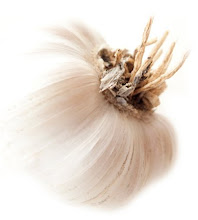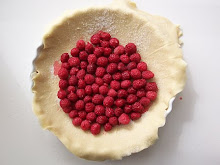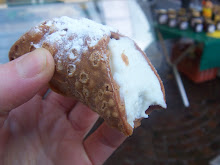 A week in Spain, I really can't complain.
A week in Spain, I really can't complain.This was a week that began on a bus to Milan Airport with an apple and oat muffin, and ended with 4 different types of cream filled Xuros (churros) and Porra on a bench, in the sun at the seaside town that is Vilanova I La Geltru, Catalonia, Spain.
In between there was mainly fried food; croquettes, fried calamari, fried artichokes, fried leeks, fried doughnuts are but a few, proving what is already a well known fact- deep fry anything and it tastes good.
I seemed to have misplaced my voice before leaving Italy. Spain was not to hear my voice, so whispering had to do. This, in turn, had inspired various games; a new category was invented in charades called Maladies charades, as well as the new lease of life to the forgotten game of Chinese whispers. Thus I was not the only one to whisper or communicate using a pen and paper.
Below is a list of some of the places we visited, food I ate and other paraphanelia.
 Barcelona
BarcelonaElche- great Paellas! I discovered a new favorite: Noodle paella with seafood and Alioli.
La Boqueria food market - yes its tourist central, and yes, the vendors are less than pleasant, but deep inside the technicolor market there is a fruit juice stand like no other; two young girls are touting 1 Euro plastic cups of freshly squeezed juices with fruit combinations such as coconut strawberry (my choice), cherry mango, Blackberry banana- it’s a bargain, its really pretty to look at and nutritious simultaneously!
Santa Caterina food market- Enrique Miralles designed the market renovation, yet another reason to fall in love with Barcelona and appreciate the work of a great architect. Located nearby to the gothic cathedral, the contemporary and the historical Barcelona feed off each other without outshining one another; this is what Barcelona does best.
An inspiring structure, its best feature, the roof, can only be seen by the surrounding apartments overlooking it.
Barcelona Reykjavik Bakery- run by a Catalan and Icelandic couple, this artisan bakery produces bread and pastry using ancient grain varieties and unrefined products. The bakery is located in the centre of town, surrounded by blooming almond trees.
Vila Vini Teca- a specialty food shop/ enoteca.
We had a tasting of a cheese from the Canary Islands among others. who knew.
Bubo- a patisserie designed to confuse you into thinking you have just entered a jewelry shop.
 Catalunia
CataluniaFundaciò Alícia- A foundation headed by Ferran Adrià, it is a centre focused on technological innovation in the science of food and nourishment. Set in a rural landscape, adjacent to a medieval monastery, this is another inspiring project bringing the old together with the new without causing a disturbance and proving that it can be done successful if done with enhanced sensitivity.
Located in Món Sant Benet, the Headquarters opened in 2007 and was designed by Clotet Paricio architects. The landscape, daylight and tranquility seep through the building creating a calm and relaxing environment.
We were given a tour of the facilities before a cooking demonstration of various dishes developed on- site for various restricted diets (celiac, protein allergies, phenylketonuria etc.).
Scala Dei- Up high on the southern slopes of the montsant range stands the first Carthusian monastery in the Iberian Peninsula, Santa Maria d'escaladei. The monks inhabited this area, planting crops and vines in particular, hence the origins of the Priorat wine producing region. We did not prepare ourselves to the cold climate, and even less so to the lack of heating. Naturally Carthusian monks were not interested in keeping warm; they wore sandals to feel closer to god. At the winery there was no heating, as one would expect. However, the tasting lunch at the adjacent hall was to be crispy, toasty warm. If only.
The cold cuts, solid olive oil, and wine were below serving temperature as were we. The landscape is sublime.
Capçanes- a cooperative of wine makers, this is the Catalan version of a kibutz! They even make a kosher wine.
Then there was a tough day. It began promising with a visit to the Pamies horticoles' greenhouse. A Slow Food activist, he is growing medicinal herbs and healing plants, amongst which is the stevia plant. This was not to be our last encounter.
This was followed by a welcome to a school of hotel management in Lleida; a good opportunity for the tutor to examine a few terrified students, giving random explanations about the entrance door and the library in the typical 'to your right you will find the door' manner.
The tour ended with organic cava, fried snails and souvenir bookmarks. By this point we were ready for lunch prepared especially for us using fresh produce from the herbal greenhouse. Surely one cant go wrong...
I won't go in detail to the tragic menu that began with a martini glass (?!?) filled with minced Stevia (this stuff tastes of aspartame and leaves an aftertaste you cant kill!) and ended with a dessert containing 'soil' according to the menu…
My taste buds were offended.
La Olivera winery- is located in La Vilella Alta.
The small village is set in a jaw- dropping- ly beautiful surrounding that challenges the Tuscan landscape. However, it is officially the coldest I can remember being. There seem to be few people that are willing to live in such a remote village under such climatic conditions, producing wine.
Nevertheless they produce interesting non traditional white wine varieties, as a result of the grapes grown under such a harsh climate and soil.
 Vilanova I La Geltru- is a typical small seaside town 40 km south West of Barcelona. This town is based mainly around fishing and tourism, accounting for all the fish and shopping we enjoyed.
Vilanova I La Geltru- is a typical small seaside town 40 km south West of Barcelona. This town is based mainly around fishing and tourism, accounting for all the fish and shopping we enjoyed.
The entire Mediterranean Sea life was on display in the food market as were the olive varieties.
This is also the place where I had tasted for the first time fresh peas from their pods. My entire life I had only ever eaten frozen/ cooked/mushy peas that taste nothing like the sweet and crunchy real thing. Never say never, but, Never again!









No comments:
Post a Comment